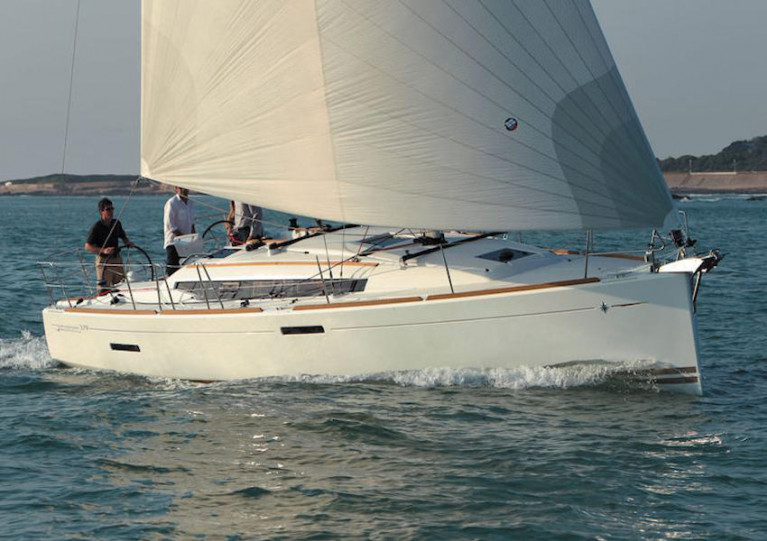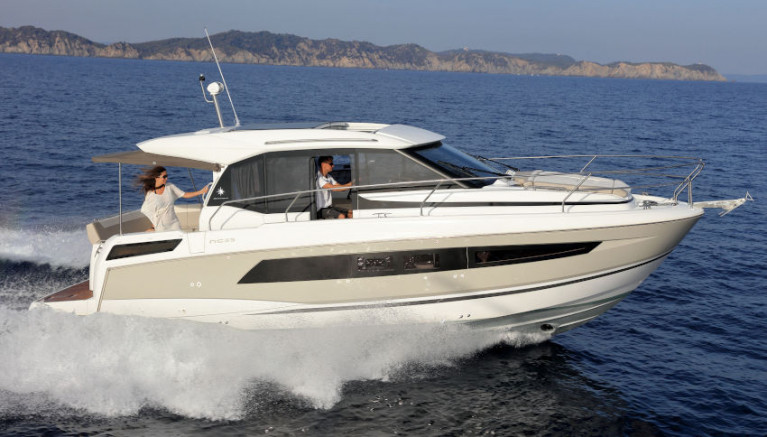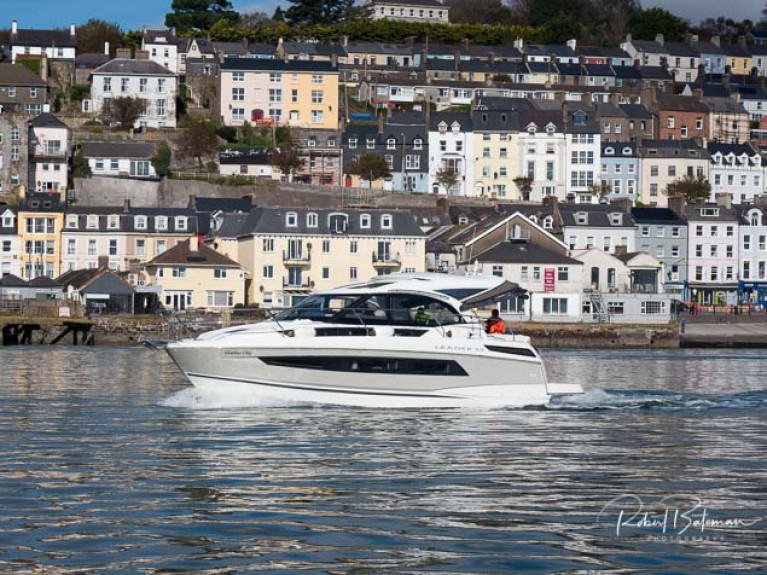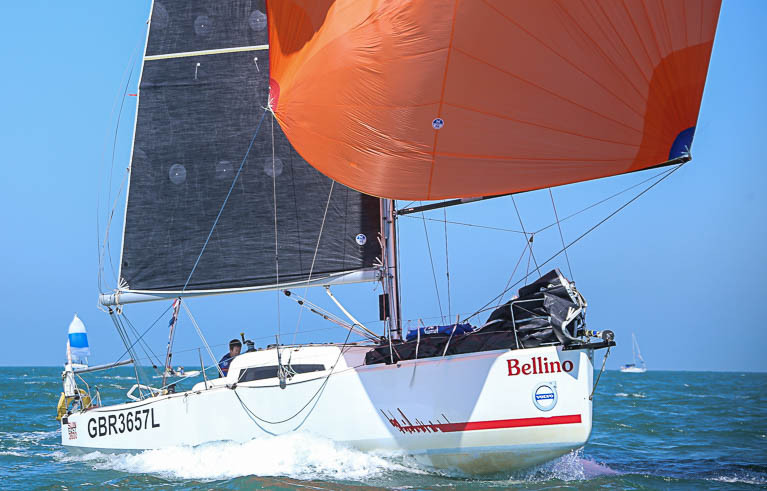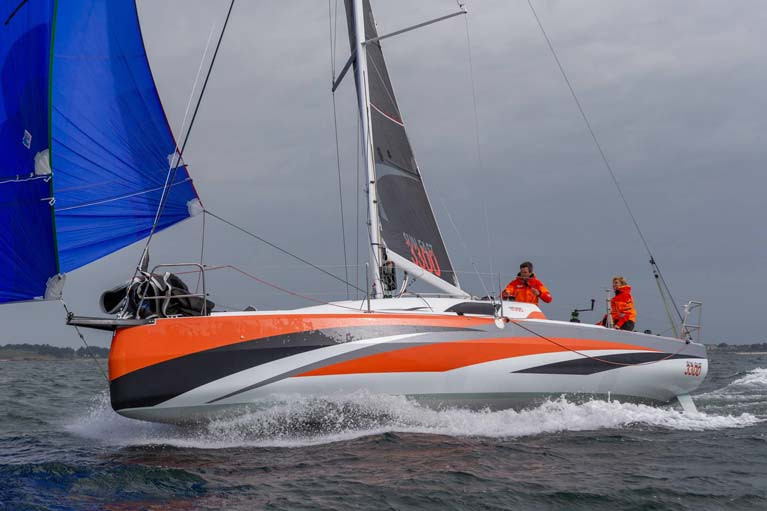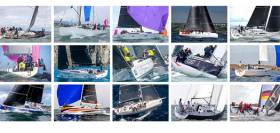Displaying items by tag: jeanneau
Dun Laoghaire yacht broker MGM Boats be exhibiting on the Prestige Yachts, Lagoon Catamarans and Jeanneau Sail & Powerboat stands for the full duration of the show from 7-12 September.
Gerry Salmon, Ross O’Leary and Joss Walsh will be available to show over a host of new models for 2022 at the event, which will cover two exhibition spaces at the Vieux Port and Port Canto.
As the Cannes boat show promises as usual to be a very busy boat sales event, the MGM Boats team advises making a prior appointment to view your choice of boat:
- Prestige: 420, 520, 590, 460 S, 690 X70
- Lagoon: Seventy7, Sixty5, 55, 46, 42, 40
- Jeanneau Sail: Sun Odyssey 410, Sun Odyssey 440, Sun Odyssey, 490, 54, 60
- Jeanneau Power: Leader 36, Merry Fisher 1095 Fly, Cap Camarat 12.5 WA, NC 37, Merry Fisher 10.95, Cap Caramat 10.5 WA
To make an appointment or if you would like to receive further information on the boats displayed, contact the sales team at [email protected]
Now in stock with Irish Jeanneau dealers MGM Boats is a “stunning” Sun Odyssey 389 in full cruising spec.
The two-cabin version comes with a Marc Lombard hull, grey cedar woodwork and Ambiance Weiss upholstery.
It’s also the last boat available for 2021 so prospective buyers should act fast. For more details see the MGM Boats website HERE.
Also available from MGM Boats are the Merry Fisher 695 Serie 2, a new compact cruiser model for 2021, and the Zodiac Pro Open 650 RIB that handles waves with ease.
MGM Boats Setting Summer Target for Delivery of New Jeanneau NC 33
Irish Jeanneau agents MGM Boats are targeting this summer for the delivery of the stunning Jeanneau NC 33.
With a hull design by Michael Peters, the new NC 33 is powered by twin diesel engines with Joystick Docking Control.
It means the driver just pushes or rotates the joystick in the desired direction and the boat follows: forward, reverse, sideways, or spinning on its own axis. It’s simple and logical.
Life on board the NC 33 is just as easy and enjoyable, with an interior and exterior layout that’s carefully considered for comfortable, harmonious cruising.
MGM Boats Celebrate 35 Years of Jeanneau's Leader Line
In 1985, Jeanneau launched the Leader 850, the first unit of a new line and a new market segment: the 'Express motor yacht'.
35 years and 10,000 units later, the Leader Line continue to attract customers with boats offering high performance and a distinctive look, while also adapted for family cruising.
As regular Afloat readers know, the brand is represented in Ireland by agents MGM Boats Ltd where the Leader model is a staple of the Irish motorboat scene.
To celebrate this anniversary, Jeanneau is offering a Limited-Edition Series with its own exclusive hull decoration, gifts pack, and prize competition.
MGM Boats Autumn Showcase Now On In Dun Laoghaire
MGM Boats’ Autumn Showcase is now open to all at the MGM boatyard in Dun Laoghaire’s Coal Harbour.
The dealership has a wide selection of new and used boats on display in the water and outdoors on the hard, featuring brands such as Jeanneau sail and motor boats, Prestige yachts, Zodiac inflatables and Lagoon catamarans.
A selection of used boats is also available for viewing, and MGM’s team of professional sales personnel and yacht brokers will be available to discuss selling or buying a boat.
With the current public health emergency, the safety of all visitors is paramount — social distancing measure will apply, and face masks must be worn when viewing all boat interiors.
In addition, appointments should be made in advance by contacting [email protected] or calling the office at 01 280 2020 or 087 226 3598.
MGM Boats’ New Jeanneau NC 37 Is Appointment Viewing
MGM Boats have taken delivery of a brand new Jeanneau NC 37 which was unwrapped in Dun Laoghaire Harbour earlier today, Monday 10 August.
Powered by twin Volvo Penta D4 270 diesel engines with joystick docking technology, the Jeanneau NC 37 is also designed as “an apartment with a terrace directly on the water” for living life at sea in absolute comfort.
The Jeanneau NC 37 has a sticker price of €409,000 inc VAT and is available for viewing by appointment only. For more details see the MGM Boats website and contact Martin Salmon on the sales team at +353 1 280 2020 or [email protected]
Five Jeanneau Sunfast 3600s Now Racing Round Ireland
Yet Another British-based Jeanneau Sunfast 3600 has entered August's SSE Renewables Round Ireland Race bringing to five the number of the hard chined pocket-rockets entered for Ireland's biennial 700-mile offshore race.
Gavin Howe's Tigris latest entry – the 44th boat into the Irish race – is a potent addition too. Howe, of the Royal Ocean Racing Club, is a former Round Britain Race competitor. A regular two-handed entry, for which the 3600 is popular for, Howe finished fourth overall in the two-handed class in last year's RORC Points Series.
Well adapted to solo, doublehanded, and crewed regattas, the Sun Fast 3600 is proving a popular marque for the August 22nd race. Four Hamble based 3600s are registered now with, as Afloat reported in May, Donal Ryan's Team Fujitsu, Deb Fish's regular Bellino as well as Black Sheep (T Middleton) all slated for the Wicklow Head start.
They'll be joined by local John O'Gorman's Hot Cookie. The National Yacht Club Sunfast 3600 took third overall on IRC in last year's Dun Laoghaire Dingle Race, so the offshore hardened crew will be a force to be reckoned with in August. AS previously suggested, although not Round Ireland registered so far, there is always the prospect of Dun Laoghaire Harbour sistership Yoyo (Brendan Coghlan from the Royal St George Yacht Club) taking on the challenge too?
We were having one of those brainstorming discussions the other day about how best to promote sailing in Ireland, when some still small voice suggested that we were going at the challenge entirely the wrong way. We were thinking in terms of promotional campaigns and more sociable events afloat and various outreach projects and targeted material and focus groups and role models and - so help us all - celebrity involvement and endorsements.
But the trip-everyone-up-counter-thought was based on the fact that – as we’ve repeated here ad infinitum – sailing is first and last and foremost a vehicle sport. Get the vehicles right and get them in a sociable race format, said the still small voice, and the people will come and get involved.
And what is the right sailing vehicle? It’s a sporting boat which optimizes the amount of performance and fun that you get in relation to the effort involved, with that effort expended in a user-friendly set-up in which the proven protocols of ergonomics are not merely acknowledged, rather they are regarded as the Sacred Scriptures.
It’s all very well for fit and agile young folk to sport around in demanding classic craft in which every feature seems to be hard angles and vertical seatbacks, awkward sail controls, conspicuously absent footholds and hand grabs, and badly-designed companionways. But when the years pile on, and you’re coping with various chronic conditions all of which end in “is” (though admittedly there’s no sign of myxomatosis so far, it’s early days yet), you become very appreciative when a lot of thought has been put into how a boat’s layout is going to work.
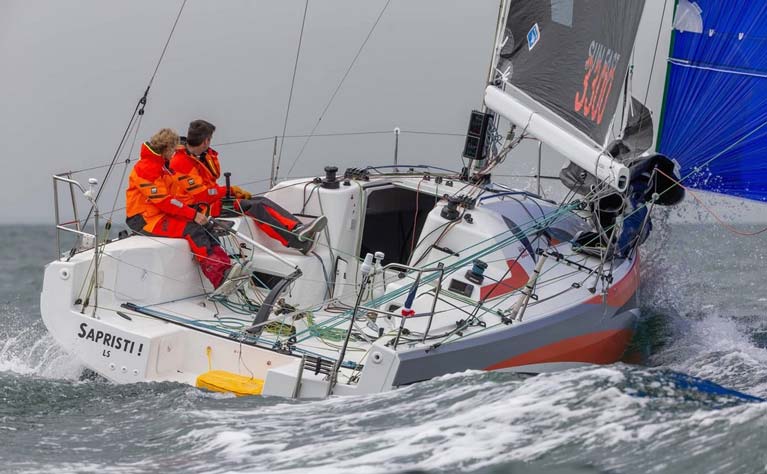 Very much a cruiser-racer cockpit with the emphasis on racing, yet within those limits, the ergonomics are sensible for comfortable sailing, and the foot-bars for the helm are of a sensible size
Very much a cruiser-racer cockpit with the emphasis on racing, yet within those limits, the ergonomics are sensible for comfortable sailing, and the foot-bars for the helm are of a sensible size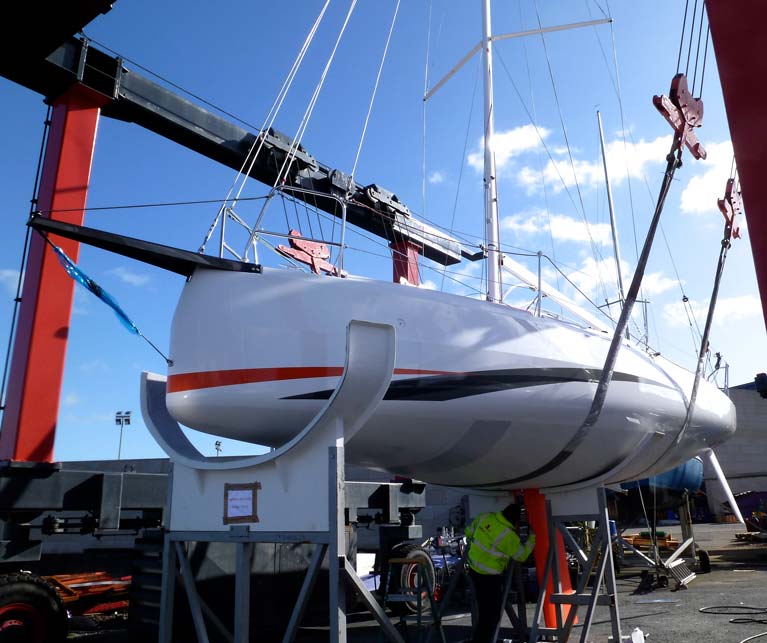 Ideas from outside the box become mainstream – “fascinating” is just the beginning of it as you contemplate the new Sun Fast 3300. Photo: W M Nixon
Ideas from outside the box become mainstream – “fascinating” is just the beginning of it as you contemplate the new Sun Fast 3300. Photo: W M Nixon
And there’s every sign that a properly functional user-friendly set-up has been a priority in putting the new Sun Fast 3300 together, as became apparent during a shoreside appraisal at the MGM Boatyard in Dun Laoghaire early this week where the first Sun Fast 3300 to arrive in Ireland was being prepared for launching by Sales Director Ross O’Leary and Simon Litwin.
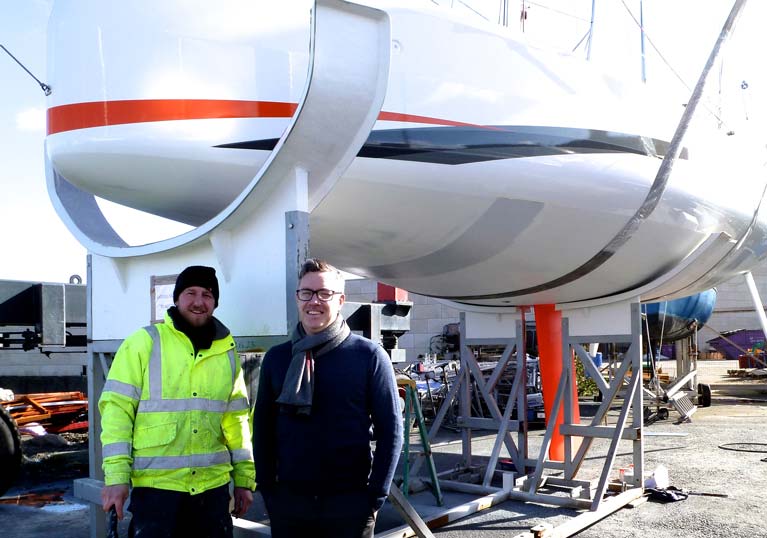 Simon Litwin and Ross O’Leary of MGM Boats with their new baby – the Sun Fast 3300’s apparent bulge amidships underwater is not an optical illusion, it’s very much part of the concept. Photo: W M Nixon
Simon Litwin and Ross O’Leary of MGM Boats with their new baby – the Sun Fast 3300’s apparent bulge amidships underwater is not an optical illusion, it’s very much part of the concept. Photo: W M Nixon
Traditionalists will need to take a bit of time getting used to her, with her reverse stem and rounded deck edge. For traditionalists will have a fondness for great big bursting bow-waves and lots of flying spray. But those great big bursting bow-waves and clouds of flying spray are evidence that the sea is doing everything it can to slow the boat back. So if you can manage to come up with a design which zips along leaving barely a trace, with minimal bow-wave and spray which just creams across the deck with no fuss at all, then you have yourself the makings of a fast boat.
In times past, fast boats went quickly through the water by having hollow waterlines forward to facilitate the progress of their heavy displacement hulls. But the Sun Fast 330 has rounded waterlines, yet in profile there’s a slight hollow after of the forefoot and forward of the fin keel. She will be going over the water as much as possible, which will reduce the inevitable spray across the deck
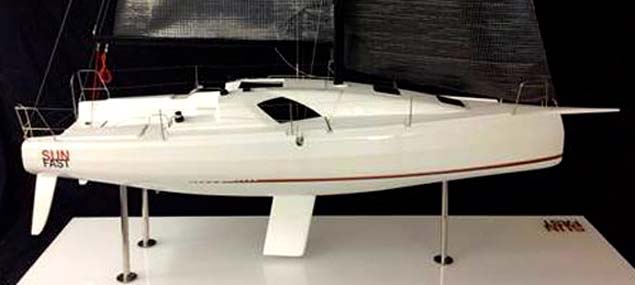 Full waterlines forward ingeniously combined with a hollow profile underwater, while the notion of stepped sides in the coachroof with forward-outlook windows is becoming mainstream.
Full waterlines forward ingeniously combined with a hollow profile underwater, while the notion of stepped sides in the coachroof with forward-outlook windows is becoming mainstream.
Technically speaking, we’re told these hollows on the centre line underwater “enable an improved distribution of dynamic pressure while limiting drag on the hull and minimizing the surface below the waterline for greater performance”. As for the fin keel, it rejects the use of a lead ballast bulb and other complications in favour of a simple shape to provide a reduction in drag and an optimized centre of gravity.
You’ve heard of modern fusion cuisine? Well, this is modern fusion yacht design, with outside-the-box ideas becoming mainstream. The two great talents involved in creating the very satisfying end result are no slouches when it comes to providing completely new ideas themselves, as the boat emerges from a collaboration between longtime Jeanneau associate Daniel Andrieu (who may be 73, but he thinks very young indeed), and Guillaume Verdier, who is in the flush of youth by today’s standards, as he’s only 49. But he has been in the sharp end of the design department of some very successful big global campaigns, and is refreshingly frank about his creative approach: “My desk is messy but my mind is clear”.
 Daniel Andrieu has designed 16 boats for Jeanneau, yet he is still bursting with fresh ideas at the age of 73.
Daniel Andrieu has designed 16 boats for Jeanneau, yet he is still bursting with fresh ideas at the age of 73.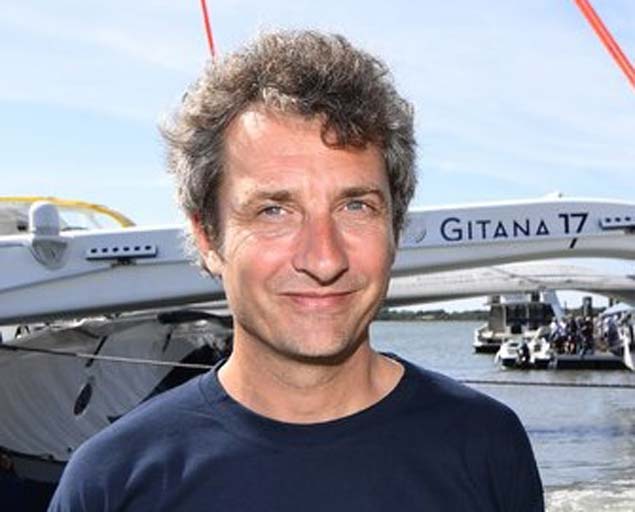 Rockstar designer Guillaume Verdier – “my desk is sometimes messy, but my mind is clear”
Rockstar designer Guillaume Verdier – “my desk is sometimes messy, but my mind is clear”
The very first prototype Sun Fast 3300s appeared last year just as everyone was notching up the excitement dial about the woman/man two-handed offshore boat for the 2024 Olympics, and they made such a favourable impression that many are already thinking of her in Olympic terms.
But some of us view sailing’s inevitable reliance on the four-year Olympic searchlight with very mixed feelings. While acknowledging that it’s one of the few ways in which our complex and quirky sport can make itself of attention for fickle global public interest, it would be a sad business if a boat as fascinating as the Sun Fast 3300 was seen mainly in the narrow yet distorting focus of the Olympic priority.
For she seems to be much too good a boat for just that one blinkered purpose. Here you have a boat which will undoubtedly provide optimum performance for a crew of two, yet will be rewarding and fun for a larger ship’s complement. She may be only 32ft 10 ins in overall length, but she’s all boat, and with that rounded bow - which pedants will ultimately trace to Ian Lipinsky’s pioneering MiniTransat boat Griffon 2 or even to the Buddy Melges American Lake Scows – she behaves like a bigger boat as she moves over rather than through the water.
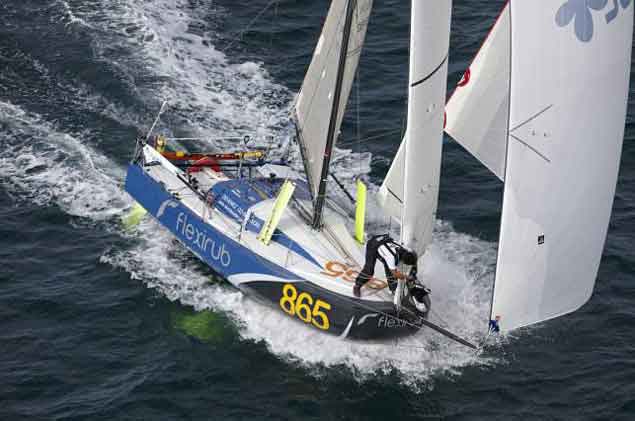 The full-bowed concept carried to its ultimate – Ian Lipinsky’s successful MiniTransat boat Griffon 2.
The full-bowed concept carried to its ultimate – Ian Lipinsky’s successful MiniTransat boat Griffon 2.
Yet while you will need extra-efficient foul weather gear to see off any unhindered spray which will come swiftly across the deck - for fast boats are usually wet boats - in every other way you’ll be as comfortable as possible in the cockpit, on deck, and particularly in the accommodation.
You’ll immediately notice the stepped side in the coachroof, which has become best known through its success on the all-conquering JPK 10.80. But while someone will doubtless claim that the idea was there before that particular great boat appeared, we’ll happily give all credit to Jean-Pierre Kelbert and his designer Jacques Valer for a design feature which confers multiple benefits.
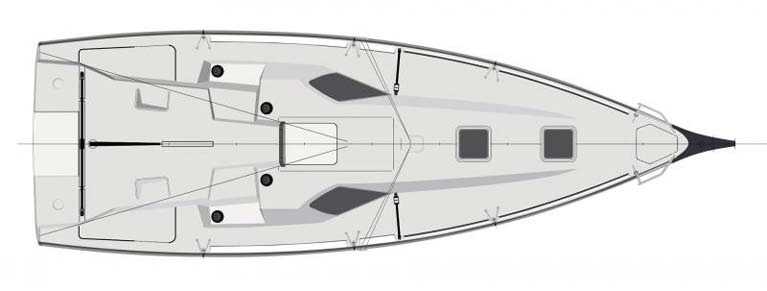 The deck plan indicates the potential which is released for better utilization of space when the stepped-side configuration is used in the coachroof design.
The deck plan indicates the potential which is released for better utilization of space when the stepped-side configuration is used in the coachroof design.
It leaves space on deck where it is most needed, yet provides space below where it is of added value. And while you may think that the ability to see clear ahead from down below is of limited benefit, believe me you’d be surprised the difference it makes. In my own case, it was during ten very happy years with a Hustler 30 which – unusually - had a porthole in the forward end of the coachroof, a feature which - on at least two occasions while anchored in a gale - made us readily aware that another boat was dragging down on top of us while there was still time to take avoiding action.
As for the great big “bee’s eyes” which are the forward-looking side windows on the Sun Fast 3300, they really do give remarkable vision so long as you’re sufficiently disciplined to also keep a proper on-deck lookout most of the time.
But even the toughest offshore campaigner needs to get in out of the elements now and again, and it’s good to see that the adjustable sea berths in the saloon have proper grown-up adjustment tackles. When the boat is at her optimum performance, comfortably sailing at an angle of 15 to 20 degrees thanks to the high level of control conferred by the twin rudders, it does no harm to remember that a crewman below tucked comfortably into the weather cot adjusted to the optimum angle actually has his or her body weight further outboard than some unfortunate perched on the weather rail with their legs over the side, exposed to the elements and straining every sinew to maximize leverage.
 While the accommodation is basic, it’s comfortable within its limits and makes clever use of the extra space and localized extra headroom provided by the stepped-side coachroof.
While the accommodation is basic, it’s comfortable within its limits and makes clever use of the extra space and localized extra headroom provided by the stepped-side coachroof. The easily adjusted cots optimize the usefulness of the weight below of the off-watch crew.
The easily adjusted cots optimize the usefulness of the weight below of the off-watch crew.
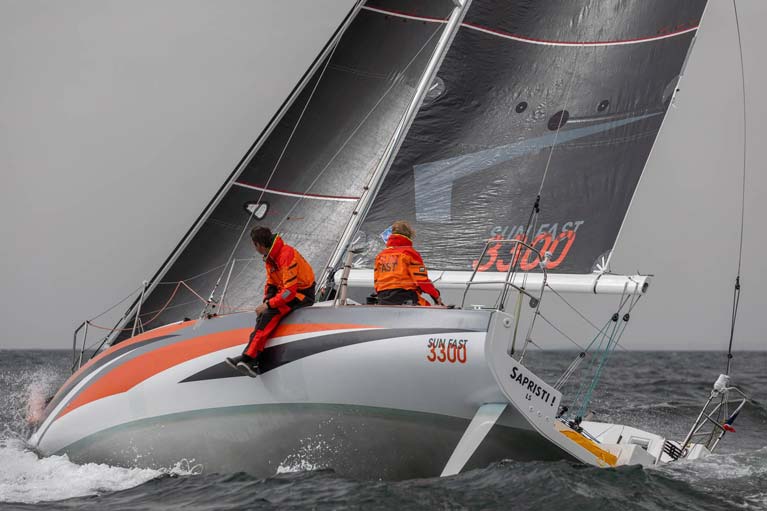 The effectiveness of twin rudders when the wedge-shaped hull is well-heeled is effectively demonstrated in this photo, but so too is the fact that the weight of the crew on the weather deck would actually be further outboard were they securely in the weather side adjustable cot below
The effectiveness of twin rudders when the wedge-shaped hull is well-heeled is effectively demonstrated in this photo, but so too is the fact that the weight of the crew on the weather deck would actually be further outboard were they securely in the weather side adjustable cot below
Having twin rudders has two disadvantages. As they’re located under each quarter, there’s no doubt that they’ll more easily get fouled by a trailing line than a centre-line rudder. But in most cases, that’s a lesson which is learned once and remembered forever.
The other disadvantage is that when manoeuvring into or out of a confined berth, you don’t have the instant boat-spinning power of prop thrust working directly on the rudder. But as the Sun Fast 3300 can spin like a top with the slightest way on, this is not the problem it would be with a boat with a longer keel.
As for the standard centre-line shaft-driven propeller, it indicates just how many experienced marine engineers still distrust SailDrive arrangements and other fancy set-ups where the entire propeller unit retracts into the boat. In the Sun Fast 3300 you’ve a time-tested shaft arrangement through a P-Bracket, but it has been usefully tidied up by having everything external enclosed within a neat housing which, apart from reducing turbulence, also reduces the number of ways in which floating lines and other detritus can become fouled in the external propshaft arrangement.
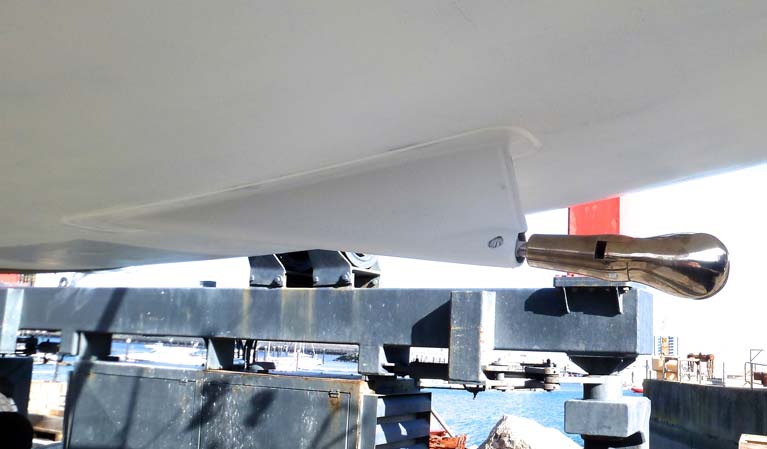 While the Sun Fast 3300 has a “traditional” propeller shaft operating through a P-bracket, all the externals are in this turbulence-reducing housing. Photo: W M Nixon
While the Sun Fast 3300 has a “traditional” propeller shaft operating through a P-bracket, all the externals are in this turbulence-reducing housing. Photo: W M Nixon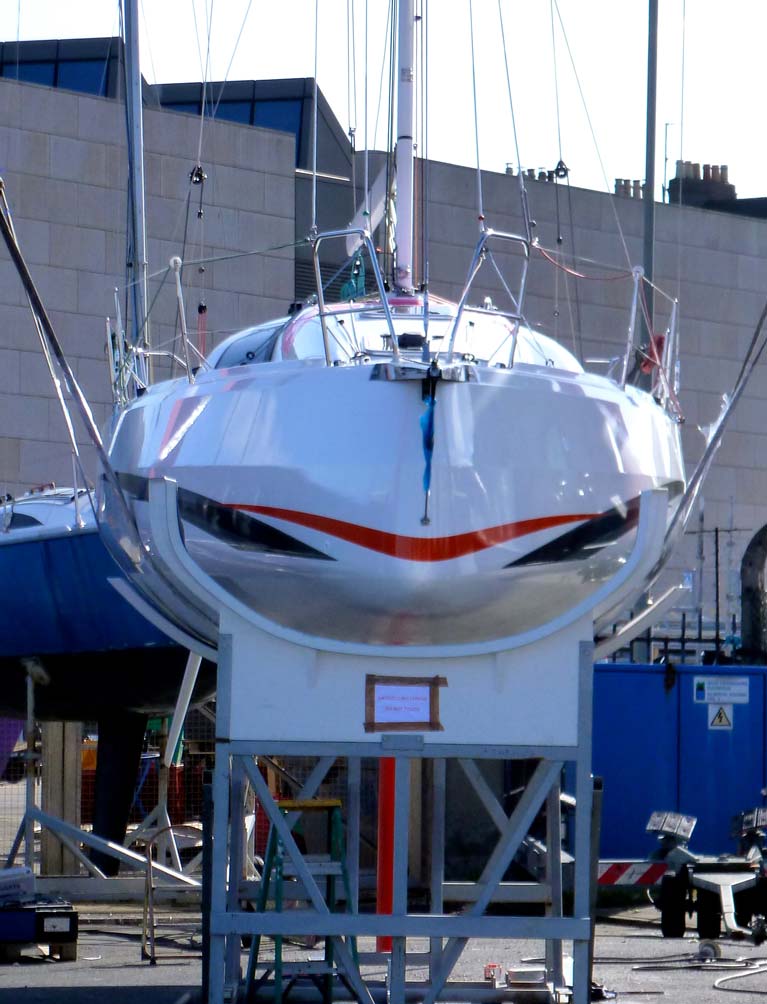 No matter which viewing angle is taken, this is one unusual-looking boat. Photo: W M Nixon
No matter which viewing angle is taken, this is one unusual-looking boat. Photo: W M Nixon
This is almost all by the way. The real story with the Sun Fast 3300 is how she sails, and though as we write this she will be making her debut in a reception at the Royal Irish YC clubside pontoon this Friday, March 6th from 2 pm with a Jeanneau presentation in the club at 7 pm, as the Irish boat’s new sails are currently being tested in the Solent, the first proper sailing experience afloat won’t be available for a few days yet.
This is because the boat has been developed in a detailed process which involved half a dozen prototypes being built, tested and re-developed by a range of experts before production started in September. One of the prototypes has gone to big-time multi-hull legend Brian Thompson, who created the long-standing round Ireland record on the 60ft trimaran Lakota back in September 1993 with our own Con Murphy and Cathy MacAleavey and owner Steve Fossett, and this weekend he’s trialling what will become this first Irish Sun Fast 3300’s sails in Solent competition.
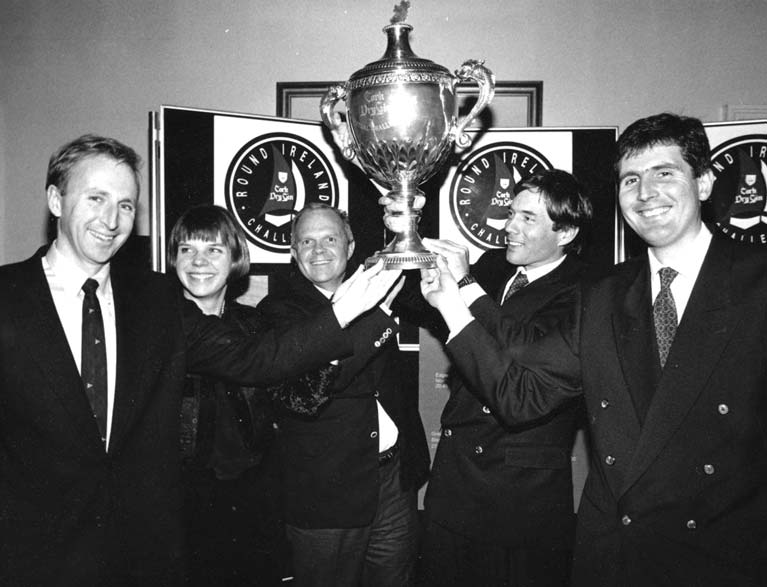 After establishing a round Ireland record in September 1993 which was to stand for 22 years, the Lakota crew celebrating in the National YC are (left to right) Con Murphy, Cathy MacAleavey, the late Steve Fossett, Dave Scully and Brian Thompson. Brian Thompson is this weekend trialling a Sun Fast 3300 in the Solent with sails which – when approved – will go to the new boat in Ireland.
After establishing a round Ireland record in September 1993 which was to stand for 22 years, the Lakota crew celebrating in the National YC are (left to right) Con Murphy, Cathy MacAleavey, the late Steve Fossett, Dave Scully and Brian Thompson. Brian Thompson is this weekend trialling a Sun Fast 3300 in the Solent with sails which – when approved – will go to the new boat in Ireland.
In a month or so the new boat currently in Dun Laoghaire will be sailed to her home port of Kinsale, where’s she’ll be known as Cinnamon Girl. The waiting list for a fresh-out-of-the-wrapper Sun Fast 3300 is now pushing towards the six months mark, so the Kinsale owner (who remains anonymous for the moment) deserves every congratulation on placing an early order for what is now one of the hottest boats on the block.
Meanwhile, the fact that we can’t get to sail one in Ireland just yet gives us another opportunity to run the vid showing Ken Read and Suzy Leech racing one of the first Sun Fast 3300s in America to two-handed victory in the Fort Lauderdale to Key West Race at the end of January.
If we really want to promote sailing, this brief movie should be required viewing. The sun shines, the breeze is steady, and two very experienced sailors are effortlessly getting the best out of a perfectly set up and very interesting boat with helming skills which minimize sail trim effort and conserve energy for when it is really needed. In a distance race, conditions are inevitably going to change at some stage. But while they are briefly steady, you make the best of it, and the boat moves sweetly along in a style which is a joy to behold.
Top Yachts 2020: Olympic Sailor Picks 15 Race Boats from 30-50 Feet
Olympian and Sailing Coach Mark Mansfield runs through the options available for an owner looking to buy a new boat for racing in the 30 to 50-foot range and picks his top 15 from the market
Having sailed in numerous regattas over the last few years, there are clear designs that feature well on the IRC rating system used in Ireland, the UK, France and many other European countries. Some of the 15 that I have selected below are more offshore orientated, some are true cruiser-racers, with nice interiors, and only one is a full-on racing boat.
There are, of course, numerous other designs that are no longer in production, or one-off boats. However, these 15 are yachts that could be purchased now, and in most cases be sailing and racing in Irish waters by the middle of the summer next year.
I have selected the 30 to 50-foot range as that is where the majority of new boats purchased now come from. So here goes, in size order, largest first. The pricing mentioned are the basic prices without Instruments, sails or safety gear.
1: X Yachts Xp 50
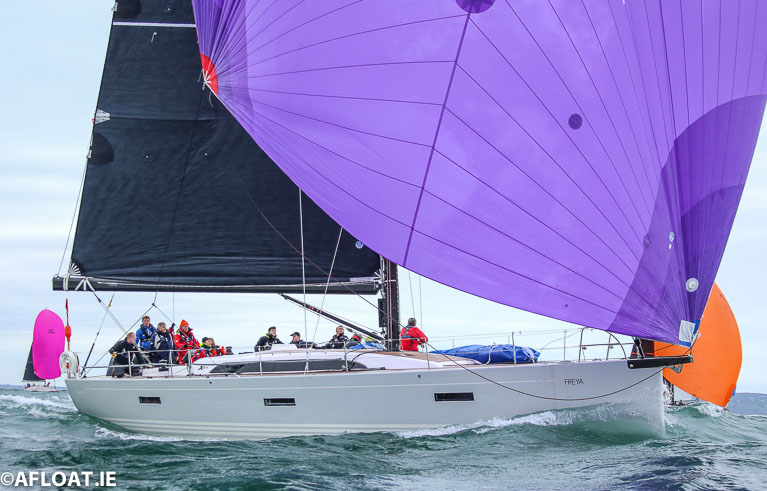 XP50 - a proper cruiser-racer with a luxurious interior Photo: Afloat
XP50 - a proper cruiser-racer with a luxurious interior Photo: Afloat
One of these is already gracefully sailing and racing in Ireland—Freya, owned by Conor Doyle of Kinsale. She has had some flashes of speed so far. Internationally there are a number of them doing well on IRC. A proper cruiser-racer with a very luxurious interior. Takes a bit of handling those large sails though.
Pricing—From €636,000 plus VAT. Available mid-July 2020
2: Grand Soleil 48
 Grand Soleil 48 Performance
Grand Soleil 48 Performance
A new design in 2018. A model designed for both Comfort but also speed. Nearly all Grand Soleil designs perform very well on Irc. The Grand Soleil 43 was an exceptional design, and it is suspected that the 48 will follow along these lines. Very well built yachts, but also with lovely interiors.
Pricing from €459,000 plus VAT. Available mid-July 2020
3: X Yachts Xp 44
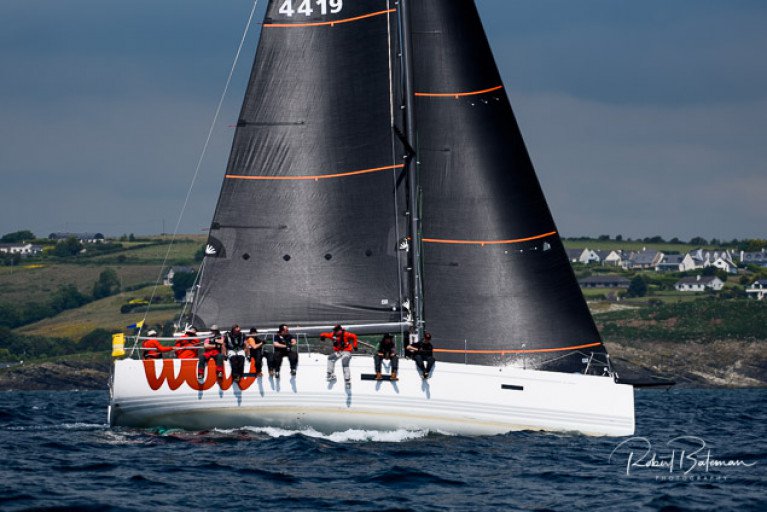 XP44 - Sovereign's Cup class winner WOW (above) Photo: Bob Bateman
XP44 - Sovereign's Cup class winner WOW (above) Photo: Bob Bateman
The X Yachts XP 44 has been around for a few years, but in those years, it has acquitted itself very well on the race courses around Europe on IRC. In Dublin, George Sisk's new Wow is an XP 44 and they have already won their class at Sovereign's week. A true dual-purpose yacht with a lovely interior.
Pricing from €358,000 plus VAT. Available mid-July 2020
4: J122e
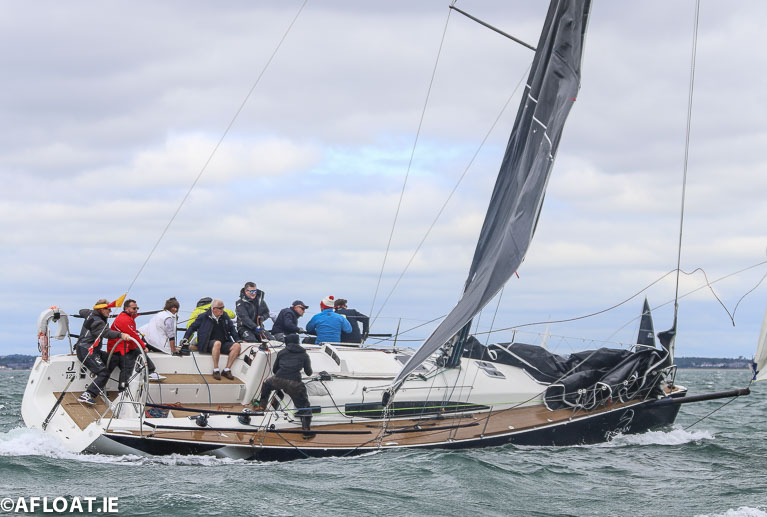 J122e - Clyde based El Gran Senor (above) combines comfort and speed Photo: Afloat
J122e - Clyde based El Gran Senor (above) combines comfort and speed Photo: Afloat
The J122e is a development of the very successful J122 design. Technically the e-versions from J Yachts are supposed to relate to cruising comforts, but all three designs with this 'e' designation appear to be extremely competitive and very good on IRC. Jonathan Anderson from the Clyde has been very successful with His J122e—El Gran Senor. A very good 40-footer combining comfort with speed.
Pricing from €296,000 plus VAT. Available Spring 2020
5: Italia Yachts 11.98
 Italia Yachts 11.98 - launched in 2019
Italia Yachts 11.98 - launched in 2019
The brand New Italia Yachts 11.98 was only launched early this season but already has finished very well in some ORC and IRC regattas in the Mediterranean. The smaller sister, Italia Yachts 9.98 finished a close second at the 2018 IRC worlds. These boats would be very able performers on IRC and still have a decent interior.
Pricing from €210,000 plus VAT. Available Spring 2020
6: JPK 11.80
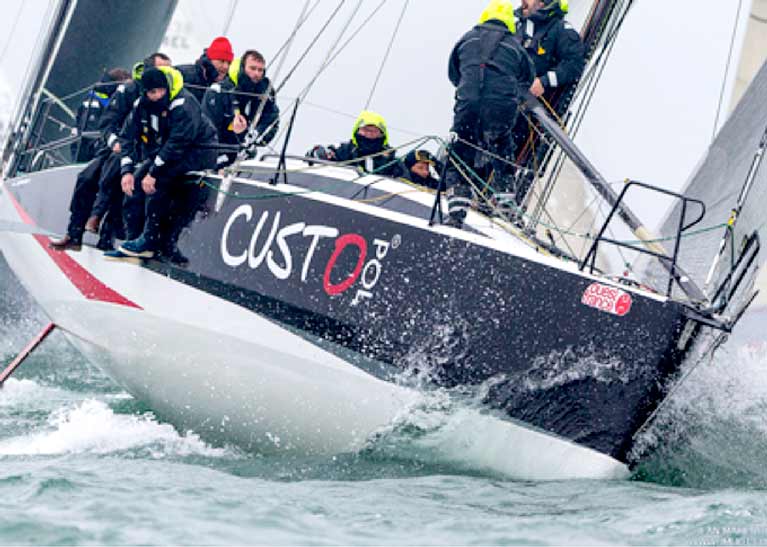 JPK 11.80 - Cowes Week class winner
JPK 11.80 - Cowes Week class winner
The JPK 11.80 is the big sister of the all-conquering JPK 10.80. Built to the same high standards, they are primarily a racing boat but actually have very good levels of comfort below deck. One of these has already won its class over the last two years at Cowes Week
Pricing from €209,000 plus VAT. Available June 2020
7: Melges IC37
 IC37 - The latest one design for New York Yacht Club where Royal Cork (above) sailed to podium success in September Photo: Daniel Forster
IC37 - The latest one design for New York Yacht Club where Royal Cork (above) sailed to podium success in September Photo: Daniel Forster
Designed by County Wicklow yacht designer Mark Mills. This design has become the latest one-design for the New York Yacht Club. Not big on creature comforts, it has however shown itself to be a potent IRC performer and while only recently launched, won its class in Cowes Week this year with a string of firsts.
Pricing from €265,000 plus VAT. Available Spring 2020
8: J112e
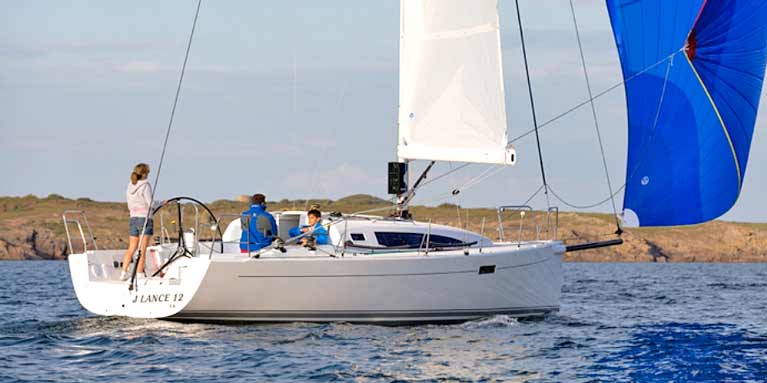 J112e - IRC Worlds and IRC Europeans winner
J112e - IRC Worlds and IRC Europeans winner
The J112e has become one of the most successful IRC boats ever. In 2018, one of these won both the IRC Worlds and IRC Europeans. Built-in France, these designs offer a true compromise between racing and cruising. In Ireland, there are already three of these racing and I would expect more.
Pricing from €199,000 plus VAT. Available Dec 2019
9: JPK 10.80
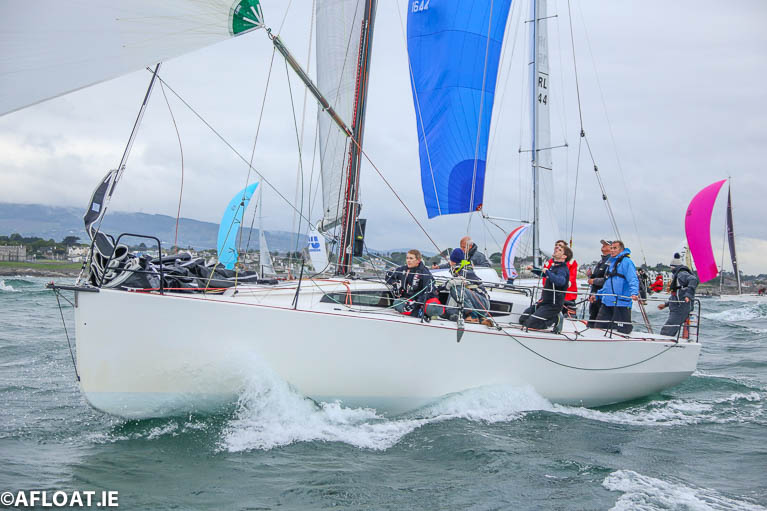 JPK 10.80 - Paul O'Higgins' Rockabill VI (above) has won the last two Dun Laoghaire to Dingle races Photo: Afloat
JPK 10.80 - Paul O'Higgins' Rockabill VI (above) has won the last two Dun Laoghaire to Dingle races Photo: Afloat
The JPK 10.80 is well known in Irish waters, as Paul O'Higgins Rockabill VI has won the last two Dun Laoghaire to Dingle races, and has also been crowned ISORA Champion for 2019. This design has won the Fastnet Race overall and, though a few years old, it is still winning on the world stage. Pretty well-appointed down below, it excels in a breeze, particularly downwind.
Pricing from €142,000 plus VAT. Available Spring 2020
10: Grand Soleil 34
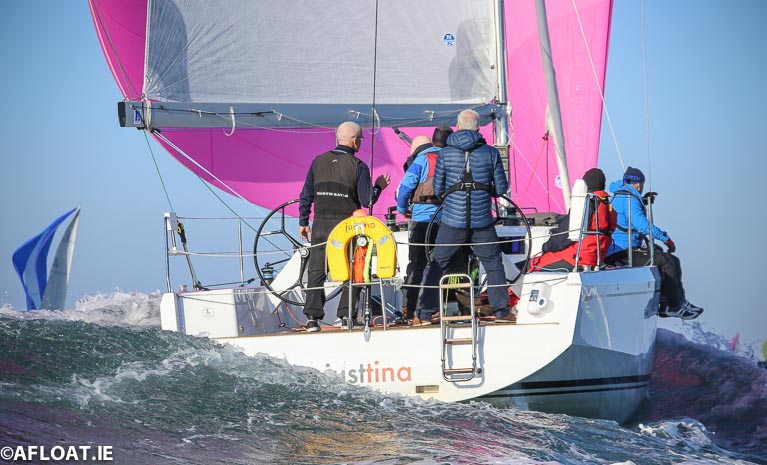 Grand Soleil 34 - Justtina (above) sails on Dublin Bay Photo: Afloat
Grand Soleil 34 - Justtina (above) sails on Dublin Bay Photo: Afloat
All Grand Soleil yachts are built very well, and the 34 is no exception. There is one in Dublin, Justina, and it is clear even from looking at her on the dock that she is a class act. She has shown flashes of brilliance since arriving and clearly there is more potential to be had. Very nicely fitted out down below.
Pricing from €149,000 plus VAT Available Spring 2020
11: J99
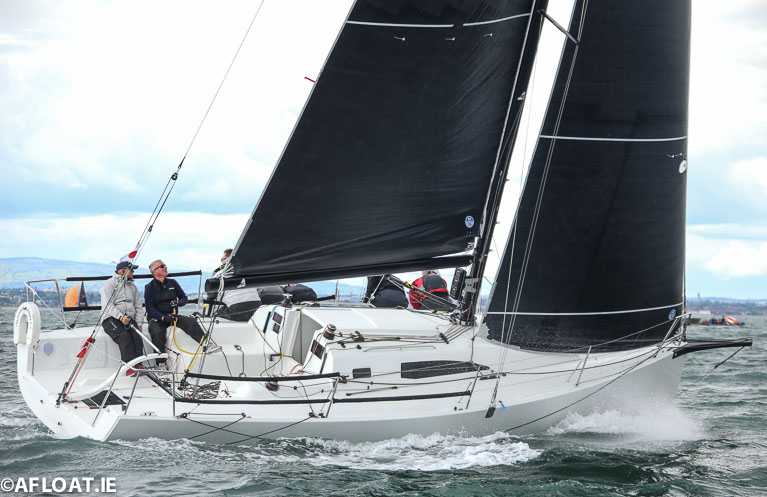 J99 - excels off the wind Juggerknot 2 (above sailing on Dublin Bay in her 2019 debut season Photo: Afloat
J99 - excels off the wind Juggerknot 2 (above sailing on Dublin Bay in her 2019 debut season Photo: Afloat
The J99 is the new kid on the J Yachts portfolio. Designed to be able to be crewed by fewer people, there is one in Dublin already, Juggerknot 2 skippered by Andrew Algeo. The jury is out on whether it is going to be as successful as the j109, but there is still more speed to be found in this design. She excels off the wind where her lighter displacement and planing hull show off her abilities. Very well built, like all J boats and very much a premium, high-class product.
Pricing from €114, 000 plus VAT. Available Feb 2020
12: JPK 10.30
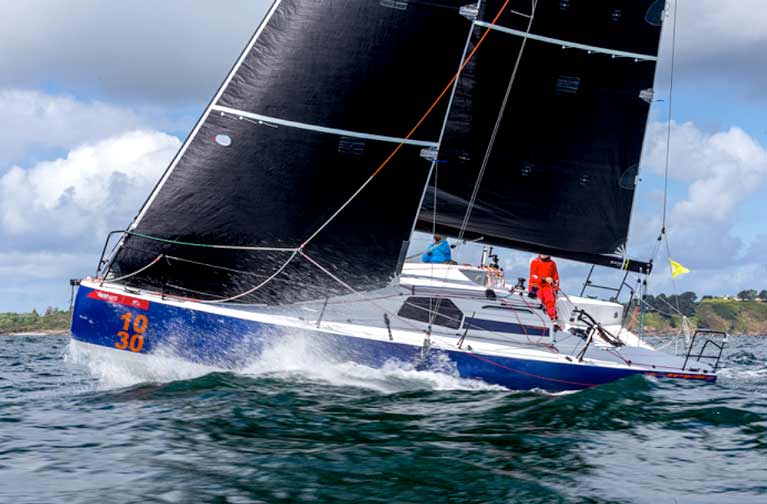 JPK 10.30 - Fastnet class winner
JPK 10.30 - Fastnet class winner
The JPK is a new design from early 2019. It has won its class of 85 entries in the 2019 Fastnet race. It replaces the JPK 10.10. Very much in the mould of all the Other JPK boats, they perform very well offshore and were designed to be crewed shorthanded. However, that is not to say that they cannot be crewed inshore with a full crew. Interior would be simple, but very usable for racing. Expect to see a few of these in the next few years in Ireland.
Pricing from €114,000 Plus VAT. Available Spring 2020
13: Jeanneau Sunfast 3300
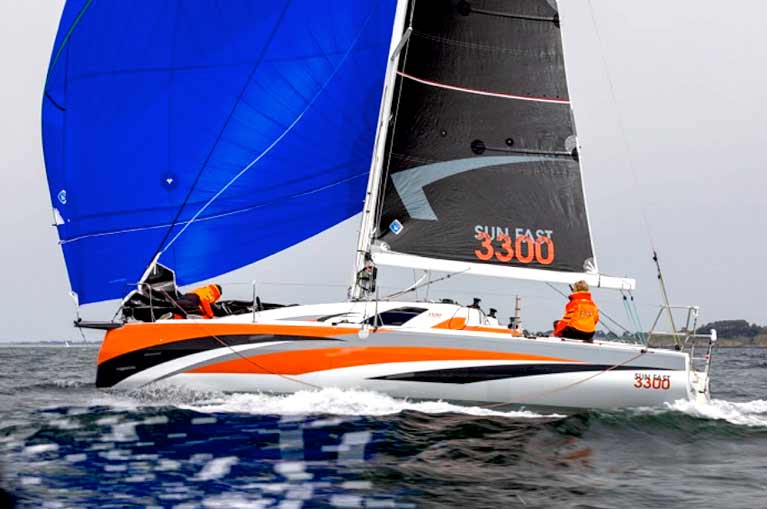 Jeanneau Sunfast 3300 - water ballast removes the need for a large crew
Jeanneau Sunfast 3300 - water ballast removes the need for a large crew
The Jeanneau Sunfast 3300 is very much along the lines of the JPK 10.30. Similar in size and rating, the two designs have been having a great Battle this year. The Sunfast bested the JPK in the opening event, Spi Ouest, whereas the JPK won her class(with the Sunfast 3300 second) in the Fastnet. Both boats are relatively light allowing them to plane easily and so are very suited for downwind sailing. Rumour is that there is an order being finalised on a Sunfast 3300 as we speak, and it will be sailed very competitively by an experienced owner. The Sunfast 3300 allows water ballast, thus removing the need for a very large crew.
Pricing from €104,000 plus VAT. Available March 2020
14: Italia 9.98
 Italia 9.98 - second in class at the 2018 IRC Worlds
Italia 9.98 - second in class at the 2018 IRC Worlds
Italian Built, and a wonderful pedigree. None in Ireland yet, and I don’t know why. This design came second in her class in the 2018 IRC Worlds, and was quite close to the excellently well-sailed J112e, j lance. Since then the Italia 9.98 has added a new IRC orientated Keel to make her even a better IRC boat. Very potent all-round boat and well built.
Pricing from €119,000 plus VAT. Available Spring 2020
15: J97E
 J97E - features well under IRC
J97E - features well under IRC
Like her larger sisters, the J97e comes from a fine pedigree of boats designed to be potent race boats but also having a well fitted out interior. So far none have arrived into Ireland yet but there are a few of the older J97 models around and they feature well under IRC.
Pricing from €130,000 plus VAT. Available December 2019
So, that is the 15 yachts I have chosen. Should any prospective owner want further details or would like to discuss why I like these models, feel free to contact me below
Useful Irish race boat sales links
Great Deals & Training On New Sun Fast 3300 With MGM Boats
MGM Boats are promising great deals on early orders for the new Sun Fast 3300 which is entering production this autumn in time for the 2020 sailing season.
This follows the successful introduction of Jeanneau’s new model — “a bold racing boat, without compromise, designed for success” — to racing fleets in Europe this summer.
The Dun Laoghaire yacht brokers have also pledged to provide ongoing technical support and training to help any level of owner and sailing team reach their goals with the Sun Fast 3300.
The existing Sun Fast 3600 fleet benefited tremendously from MGM Boats’ on-the-water and in-the-classroom training programme last autumn and winter, which involved a panel and coaches and the support of North Sails and UK/McWilliam Sailmakers.
The new Sun Fast 3300 will be on display at the Southampton International Boat Show from this Friday 13 September — contact MGM Boats at [email protected] to arrange a viewing appointment and get all the information on the Sun Fast promotion and programme.



























